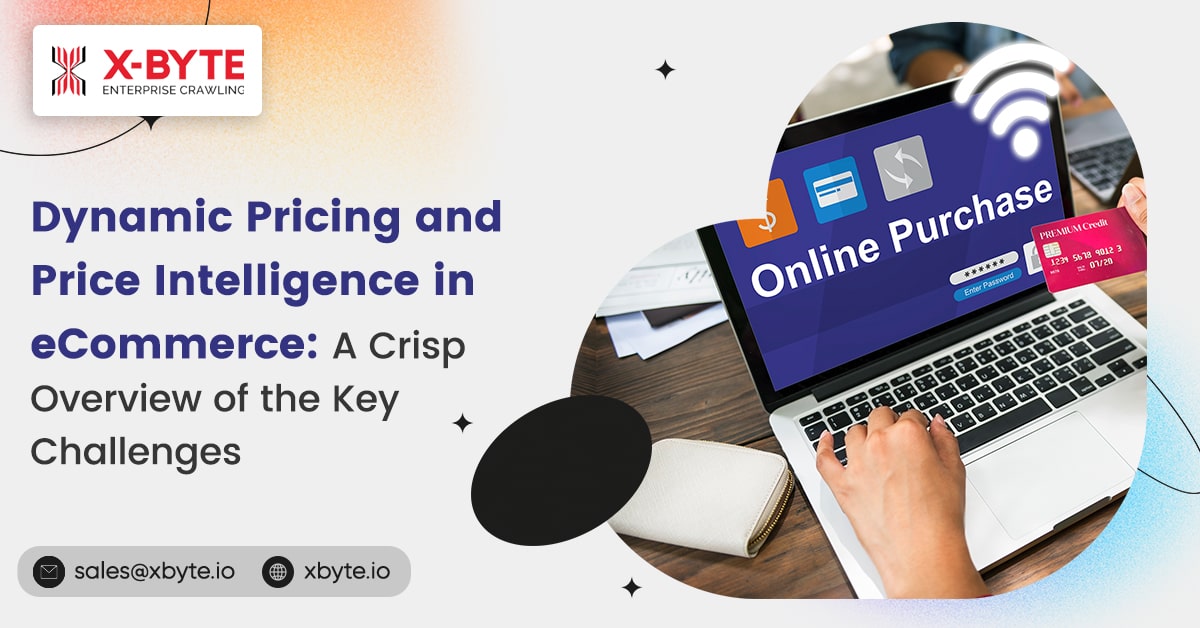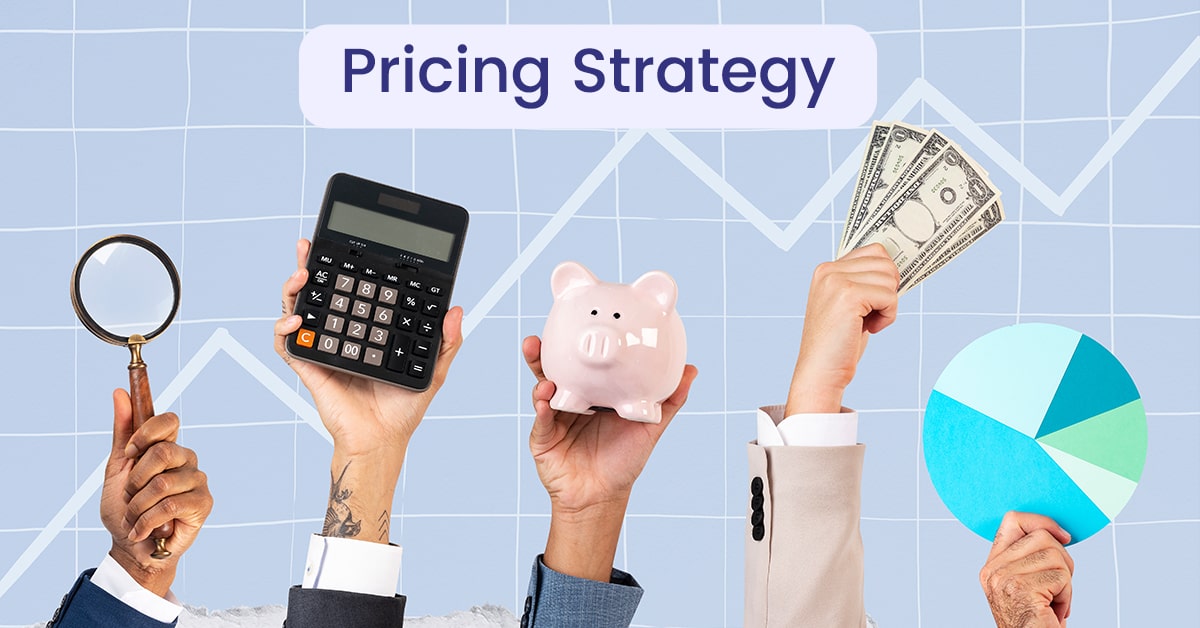
Introduction
The arena of eCommerce is taking over the world by storm. For instance, global online retail sales are expected to transcend the USD 1 trillion threshold by 2025. Thus, one can only imagine the magnanimous scope that eCommerce holds. Owing to its colossal scope, corporate bigwigs and small enterprises leverage eCommerce to bolster profitability and sales.
To stay afloat in the competitive world of eCommerce, businesses are compelled to follow trends. Some fads that bombard the eCommerce world, like dynamic pricing and pricing intelligence, stand out. What are they? Let us find out!
A Brief on Dynamic Pricing
We can understand dynamic pricing strategies such as surge, demand, or time-based pricing. The strategy allows businesses to set flexible prices premised on current market demands. The crux of dynamic pricing is to enable eCommerce ventures to continually adjust the costs of their products to remain competitive, profitable, and sought-after. Dynamic pricing may transition in minutes, hours, or days, depending on the market type!
Some of the points worth considering about dynamic pricing strategies are
- It is a responsive or reactive strategy that allows enterprises to adjust and manipulate their product prices according to market changes.
- Dynamic pricing involves reacting to changes in supply and demand in a prompt fashion so that businesses can leverage the rapid transitions.
- Nowadays, with the advancement of tools for real-time dynamic pricing, eCommerce ventures can make data-driven decisions easier.
The Eight Different Kinds of Dynamic Pricing Strategies
Dynamic pricing has many forms; all can be co-opted for different goals.
1. Segmented Pricing
It is a type of dynamic pricing strategy that produces different prices for different customers. Thus, customers are divided into segments. For instance, high-value customers can be offered higher prices, as we can assume that they prioritize speed and quality over price.
2. Fluctuating Market Conditions
The market scenario is always in flux due to an amalgamation of factors. But, it is understandable when businesses find it difficult to stay ahead of trends. In such a context, if the sales of an enterprise plunge, then it will go for the lower dynamic pricing strategy.
3. Time-based Pricing
Various eCommerce ventures can use the time-based pricing strategy to levy more costs for faster services. Thus, the implication is that people will pay more to receive same-day services.
4. Peak Pricing
Peak pricing is another pertinent dynamic pricing strategy many industries use. Here, the charges are increased if the company operates during peak hours. The method has similarities with time-based pricing, as both are incredibly dynamic at their core.
5. Penetration Pricing
A pricing strategy is used when an enterprise wants to compete in a large market segment. By doing so, future customers get acquainted with the products they offer. To skillfully perform penetration pricing, a business has to fix its prices below the market price and increase them gradually and stealthily.
6. Value-based Pricing
Here, the customer has the upper hand, and the price of a product will not depend on production costs, competition, and other variables but mostly on how the customers perceive your product. Thus, the higher the value, the greater the willingness of the customers to pay. Luxury brands exemplify value-based pricing, as they rely solely on this technique.
7. Price Skimming
Price Skimming is a dynamic pricing technique used mainly by enterprises launching new products. With no tension about price competitiveness, enterprises can set a higher price and decrease it in time.
8. Bundle Pricing
Different products are combined and sold at a lower price. Bundle pricing is often well received among consumers as they must pay less.

The Different Pricing Challenges You Should Be Aware Of
As an up-and-coming business, you should be aware of specific pricing challenges, such as –
-
- Fear of Setting the Wrong Price:
To avoid fixing the price neither too high nor too low, you must conduct thorough preemptive research. For instance, when customers do not buy an item due to high prices, your enterprise loses money as you do not cover costs. On the contrary, if you set the price too low, potential buyers will only purchase products if they feel cheap.
-
- Restricted Margins
The second pricing challenge that enterprises often face is squeezed margins. As prospective customers can access near-infinite information across platforms, businesses must make their prices transparent.
-
- Easy Access to Competitors and Near Substitutes
With increased device usage, including computers, tablets, smartphones, etc., prospective customers can compare prices with a tap on the screen. At the base level, every eCommerce venture, irrespective of its scale or size, is competing with Amazon, eBay, and other bigwigs. Besides, if you are a brick-and-mortar store, the prospects might visit your store only to see the real-life product, a practice known as showrooming. It lets shoppers choose the lowest price and order instantly from the platform offering the best rate.
-
- No Need for a Physical Location
Unless you are a service provider, such as a plumber, doctor, etc., the location might not matter to your prospective clients. Thus, the culmination may be pricing challenges for some businesses, but it might provide others with entrepreneurial opportunities.
-
- Need to Be More Diverse
As customers are spoiled rotten with various product and service options, they might feel entitled to variety. Thus, your business must pull the socks and infuse diversity into your portfolio and inventory.
Are There Any Benefits With Pricing Changes?
Some of the pertinent benefits of dynamic pricing strategies include the following
- An enterprise can make faster and more profitable changes in sales. Thus, their business becomes more abreast of the market changes and can act more flexibly and tactfully.
- Dynamic pricing also facilitates price optimization, wherein you have the scope of tracking and adjusting prices vis-à-vis the competitors
- Lastly, overcoming pricing challenges helps an enterprise get a clearer view of the industry trends. They can understand which items are bestselling, which competitors are the biggest threat, and more.
Conclusion
So, there we have it, a crisp overview of the challenges produced by dynamic pricing and price intelligence in eCommerce and how businesses can benefit by overcoming them. In 2023, indulging in pricing intelligence and dynamic pricing strategies is indispensable for an eCommerce venture to stay profitable.
